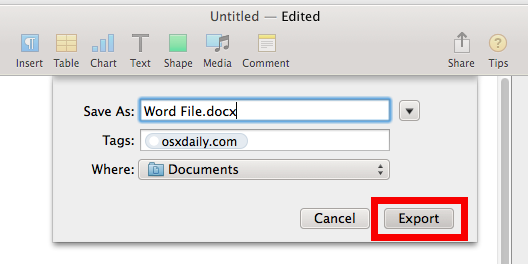
Mac Save Doc As Pdf For
Aug 28, 2016 - How to Save a Word Doc as PDF in Word for Mac. Open the Word DOC to you want to save as a PDF into Word. Pull down the “File” menu and choose “Save As” (or click the little disk icon in the title bar) Look for 'File Format' and choose “PDF”. Mac Word to PDF with hyperlinks The problem of losing hyperlinks when working with Mac Word and print/save to PDF (with or without Adobe Acrobat 'Pro') had been vexing, so I'm sharing what has been the best solution for me --Microsoft Office365 has web apps similar to Google Docs.
Export a Pages document to PDF or another file format To save a copy of a Pages document in another format, you export it in the new format. This is useful when you need to send the document to people who are using different software.
It is the only PDF file viewer that can open and interact with all PDF documents. Adobe acrobat pro mac education.
Any changes you make to the exported document don’t affect the original. If you’ve added marks or edits using Smart Annotation, they won’t appear in exported Word, EPUB, or Pages ’09 documents. In an exported PDF, annotations appear if they were visible when you exported.
• Open the document, then choose File > Export To > [ file format] (from the File menu at the top of your screen). • Specify export settings: • PDF: These files can be opened and sometimes edited with applications like Preview and Adobe Acrobat. Click the Image Quality pop-up menu, then choose an option (the higher the image quality, the larger the file size of the exported copy). • Word: If the file needs to be compatible with an older version of Microsoft Word (1997-2004), click Advanced Options, then choose.doc from the pop-up menu.
• Plain Text (TXT): Body text is exported as unformatted text. Text boxes, shapes, images, lines, tables, and charts aren’t exported.
Page layout documents can’t be exported in TXT format. Tip: To see if you have a word-processing or page layout document, click in the toolbar, then click Document. If the Document Body checkbox is selected, it’s a word-processing document. If the checkbox is unselected, it’s a page layout document. • Rich Text Format (RTF): Body text and tables are exported as formatted (RTF) text and tables. If the document has text boxes, shapes, lines, and charts that can be exported, they’re exported as images, and the document is exported in RTFD format. Other applications may not be able to open an RTFD file.
Page layout documents can’t be exported in RTF or RTFD format. • EPUB: Use this format to make your document readable in an ebook reader (such as Apple Books).
Enter the title and author name, then choose a cover option. For word-processing documents only, choose a layout type.
A fixed layout preserves the layout of your document and is best for documents with multiple columns or lots of images. A reflowable layout adapts to the screen size and orientation and lets users change the font size. It’s best for documents with lots of text. To set optional features, click the disclosure triangle next to Advanced Options, then choose a category, specify the document’s language, set the view to one page or two pages, and choose whether or not to embed fonts. • Pages ’09: This format can be opened by Pages 4.0 through 4.3 on a Mac. • If there’s a password checkbox, do one of the following: • Set a password: Select the “Require password to open” checkbox, then enter a password. It applies only to the exported copy.
• Keep the original document password: Make sure the “Require password to open” checkbox is selected. • Use a different password for the exported copy: Select the “Require password to open” checkbox, click Change Password, then set a new password. • Export the copy without a password: Deselect the “Require password to open” checkbox. • Click Next, then type a name for the document (without the filename extension, such as.pdf or.epub, which is appended to the name automatically). • Enter one or more (optional).
• To choose where to save the exported copy, click the Where pop-up menu, choose a location, then click Export. To see more locations, click the arrow next to the Where pop-up menu (in macOS High Sierra 10.13, click the arrow next to the Save As text field). To make it possible to read your document in an ebook reader (such as Apple Books), you can export it in EPUB format.
• Open the document, then choose File > Export To > EPUB (from the File menu at the top of your screen). • Enter the requested information: • Title and Author: Enter the title and author you want viewers to see if you publish it. • Cover: Use the first page of the document or choose an image file. • Layout: For a word-processing document, you can choose “Fixed layout” to preserve the layout of the page, or Reflowable so readers can adjust the font size and style (which may change how much content is visible on each page).
Page layout documents can use only a fixed layout. • Category and Language: Click Advanced Options, then assign a category for the EPUB document and indicate the language of the document. • View As: Click Advanced Options, then choose Single Page to show one page at a time, or Two Pages to show a two-page spread.